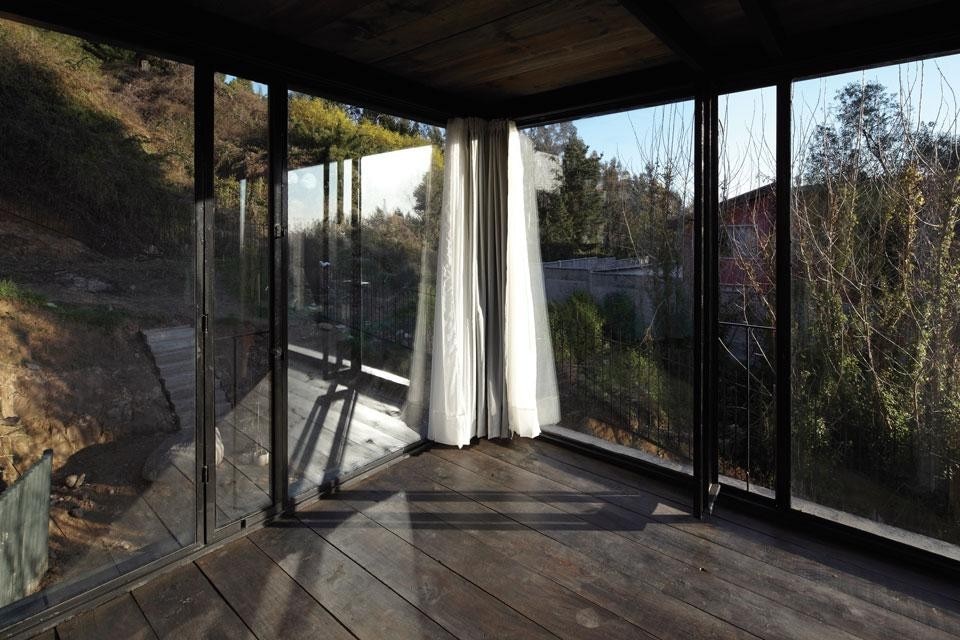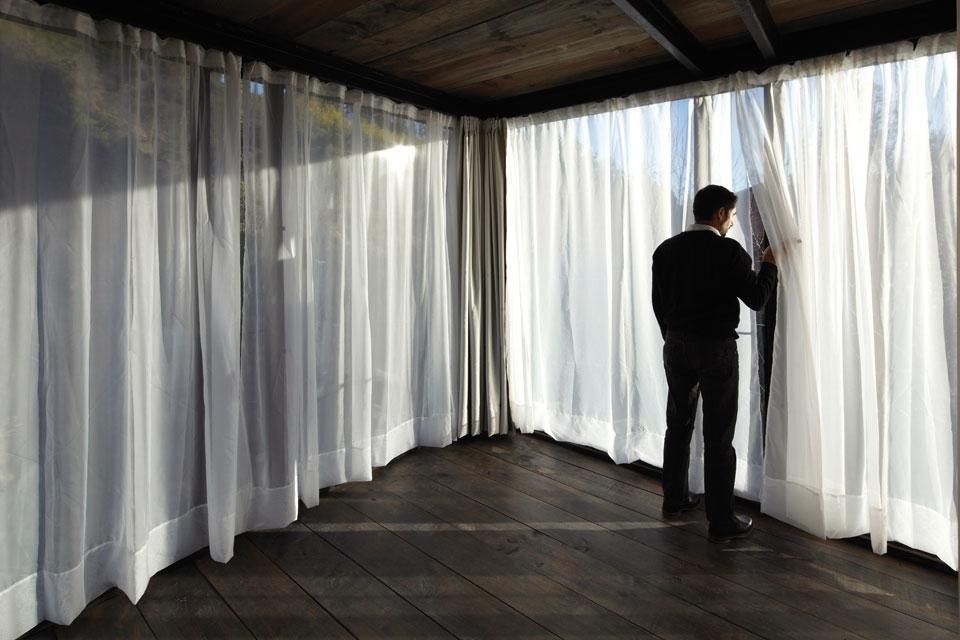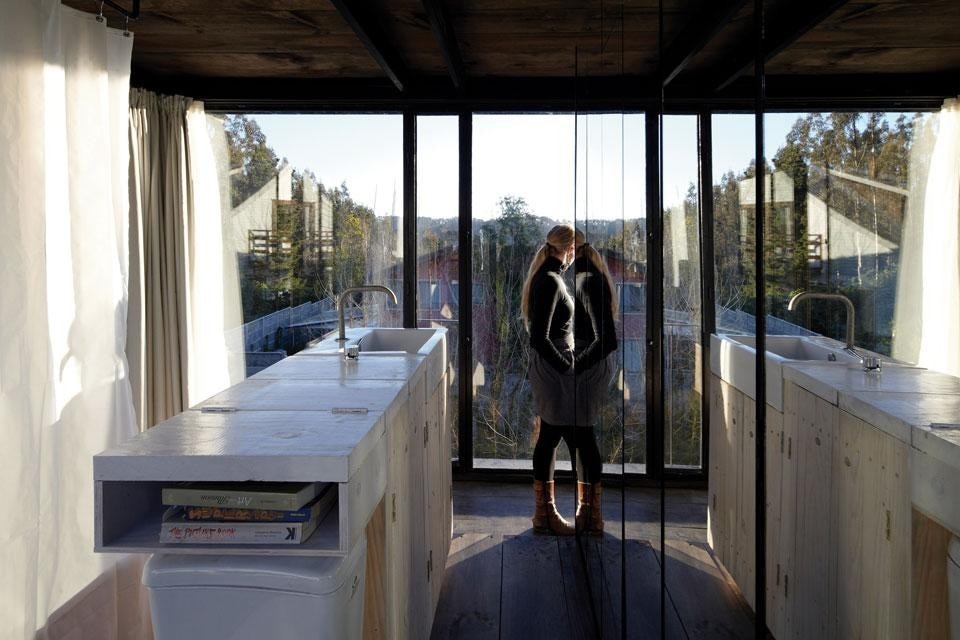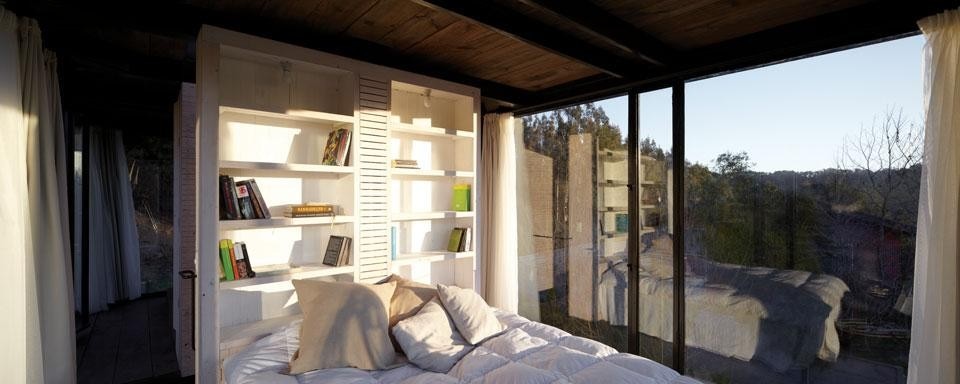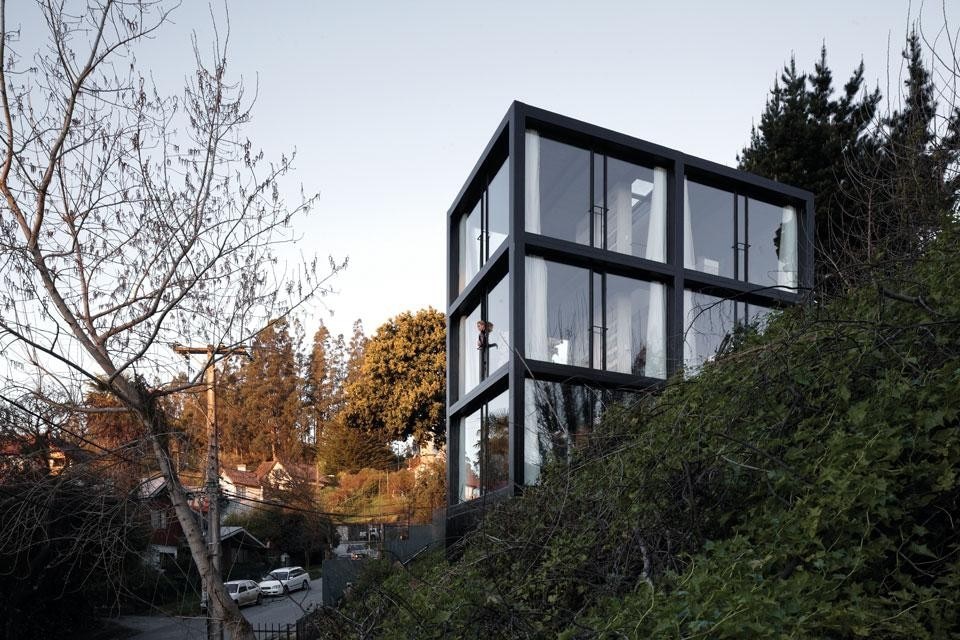In the Arco House, however, the concept of economy has injected meaning and condensed the principal design operations to convey the deep-rooted meaning of the work. Here, economy translates as structural honesty. The house comprises few architectural elements, a reinforced-concrete base, metal beams and pillars of the same size and extensive glazing. The form is a pure prism on four levels, the first of which is rooted in the ground while the other three counter the latter's inclination with their verticality.
These elementary choices have produced a geometric form that is simple to read. The house stand there, immobile, in a form that is torn between the vertical and horizontal lines of the design. The vertical line defies statics in an area at huge seismic risk; the horizontal line absorbs this tension and conveys a sense of great serenity. This unusual condition results in a balanced design in which geometry is key.
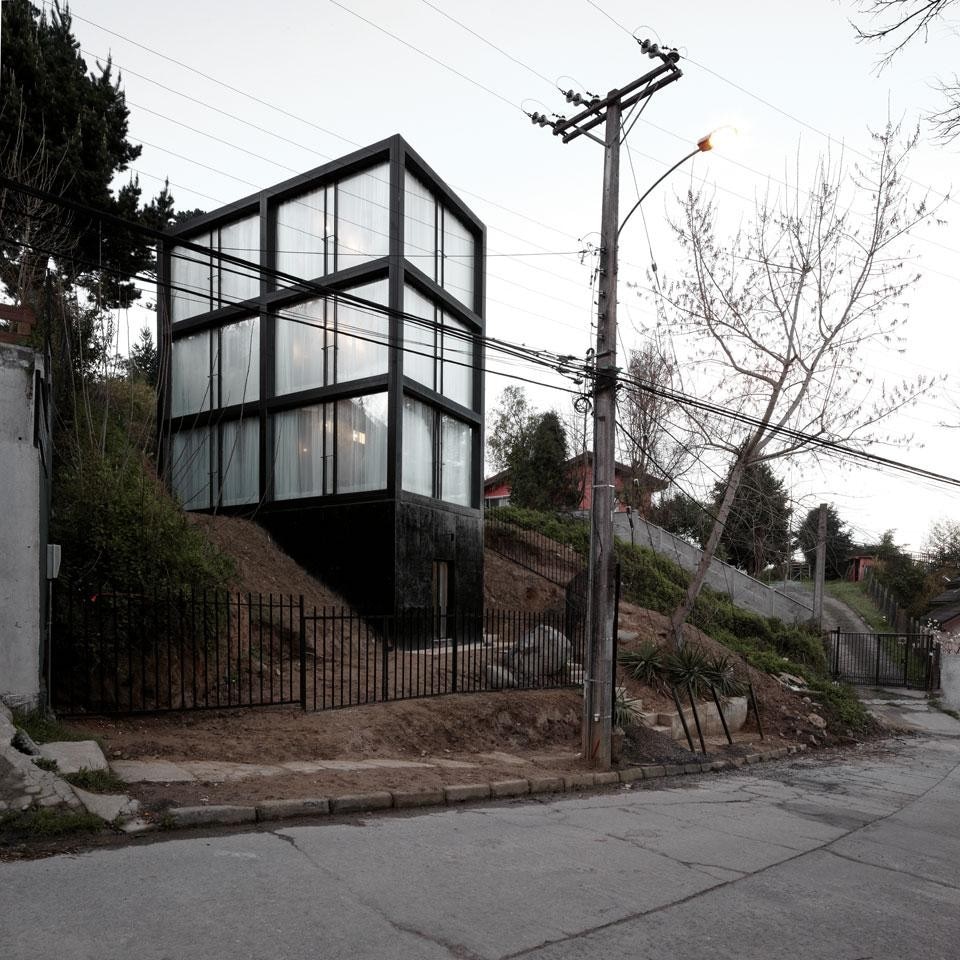
Finally, in the Arco House, economy has meant, above all, making good use of the few available resources. The weight of the structure disappears in the house's internal spaces to make room for views of the landscape. This causes the small domestic spaces to expand outwards and the elimination of a visual limit between interior and exterior considerably enlarges otherwise quite small domestic spaces, virtually extending the area to infinity.
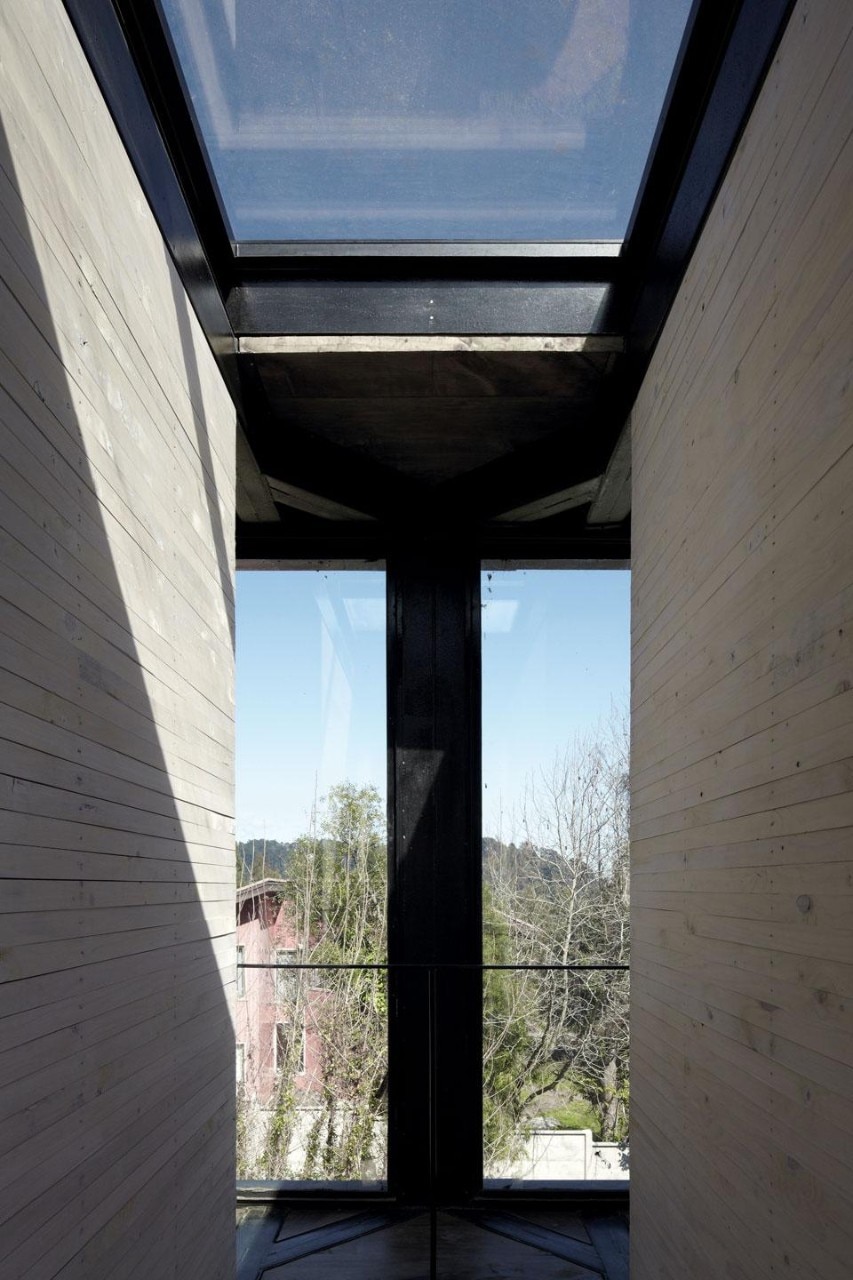
Seen with this practice's other works, the Arco House shows some continuity with Pezo von Ellrichshausen's disciplinary research but, at the same time, this project presents elements that demonstrate the two architects' ability to evolve and put forward new themes in their designs.
Lacking in sophisticated detail, the work is resolved with elementary technology familiar to the unskilled Chilean labour force, meaning the house was built quickly and inexpensively
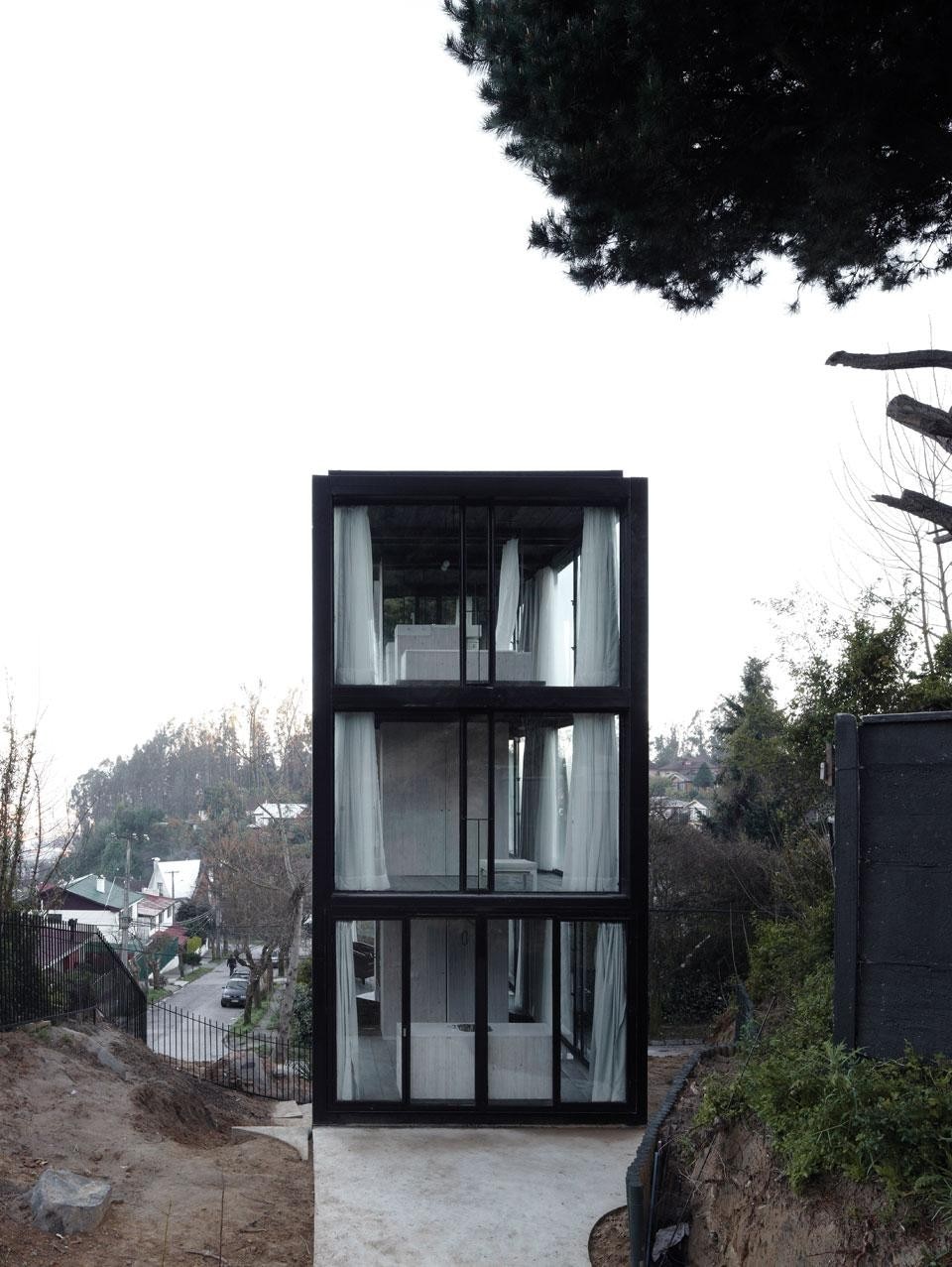
However, these houses do share the rigour of a design centred on intense respect for geometry and essence. Yet again, this architectural office has shown its amazing ability to synthesise and express itself in a work of modest size.
